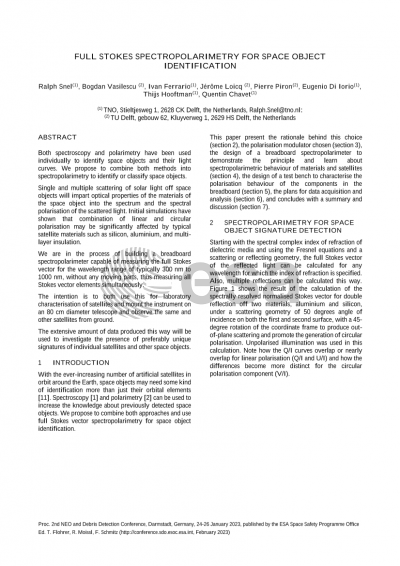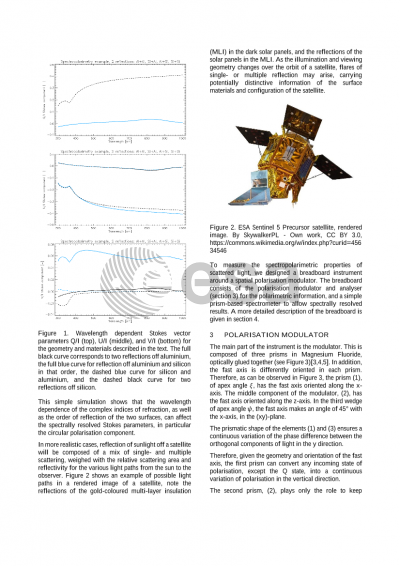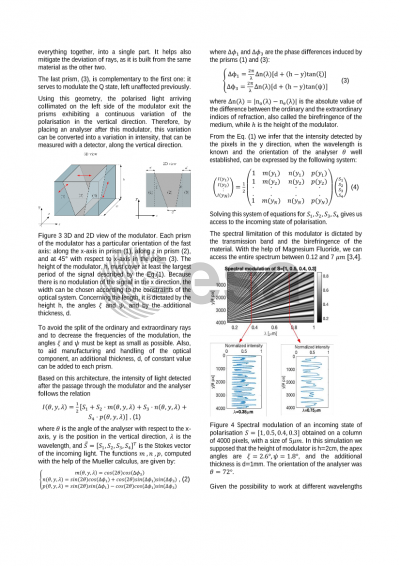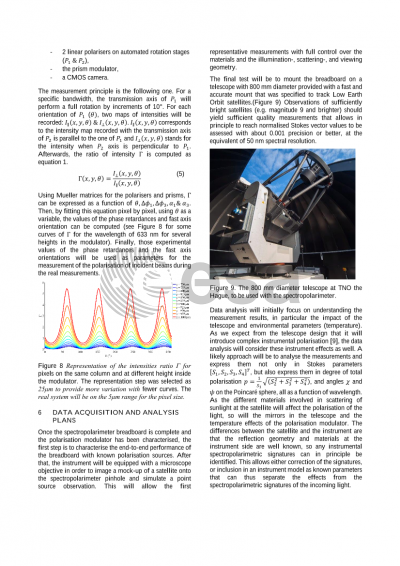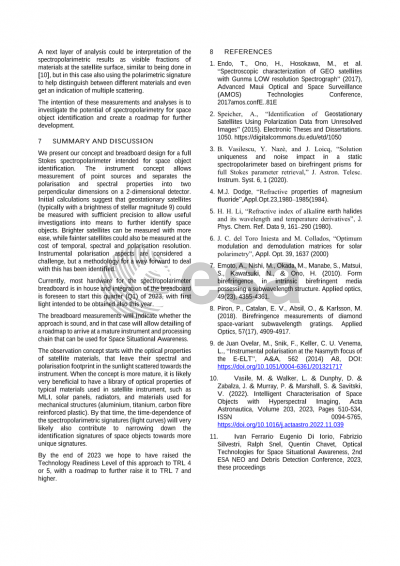Document details

Abstract
Both spectroscopy and polarimetry have been used individually to identify space objects and their light curves. We propose to combine both methods into spectropolarimetry to identify or classify space objects.
Single and multiple scattering of solar light off space objects will impart optical properties of the materials of the space object into the spectrum and the spectral polarisation of the scattered light. Initial simulations have shown that combination of linear and circular polarisation may be significantly affected by typical satellite materials such as silicon, aluminium, and multi-layer insulation.
We are in the process of building a breadboard spectropolarimeter capable of measuring the full Stokes vector for the wavelength range of typically 300 nm to 1000 nm, without any moving parts, thus measuring all Stokes vector elements simultaneously.
The intention is to both use this for laboratory characterisation of satellites, and mount the instrument on an 80 cm diameter telescope and observe the same and other satellites from ground.
The extensive amount of data produced this way will be used to investigate the presence of preferably unique signatures of individual satellites and other space objects.
Preview
